8 Great F1 team-mate rivalries
Modern chiefs can learn lessons on how – and how not – to handle intra-garage needle from past combustible combos. Damien Smith picks through the tension
DPPI
Your own worst enemy, sitting right over there in the identical car on the other side of the garage. Team-‘mate’? You must be joking. Formula 1 is littered with examples of messy civil wars. It’s rarely pretty, and it’s often petty.
8. Emerson Fittipaldi vs Ronnie Peterson
Lotus, 1973
Actually, our first entry contradicts the stereotype. Emerson Fittipaldi didn’t hate Ronnie Peterson. Of course not. How could he? It’s Super Swede! Everyone loved him.
“Ronnie was my best friend in F1,” said Fittipaldi. “I had been close to him ever since we raced in Formula 2 in 1970. I stayed with him in his house in England, he stayed with me in Switzerland. We had a strong working relationship.”
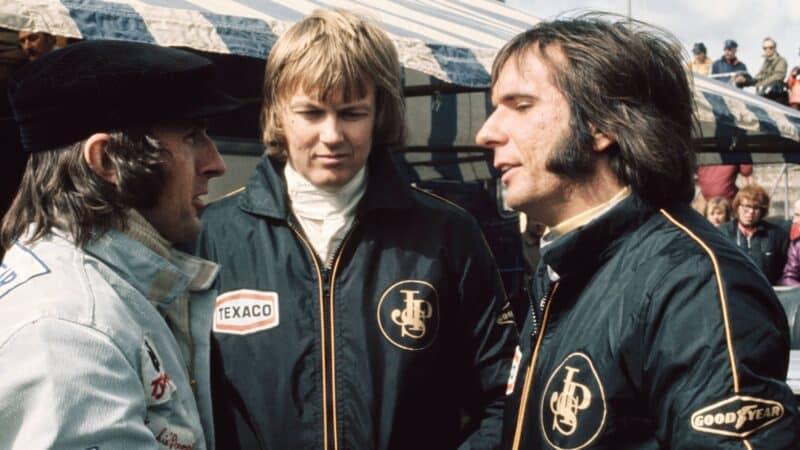
Friends at Silverstone earlier that season
Getty Images
Fittipaldi had been teamed with Reine Wisell and Dave Walker when, at 25, he became F1’s then-youngest champion. But Peterson joining Team Lotus for the ’73 defence changed the dynamic. They won seven races between them – four to Peterson, three to Fittipaldi. Over one lap the Swede was fastest: he took nine out of 14 pole positions! Then when it came to it, at Monza, their friendship was tested to its limits – all because of the Old Man.
Their rivalry didn’t break up the band. Colin Chapman did that all by himself.
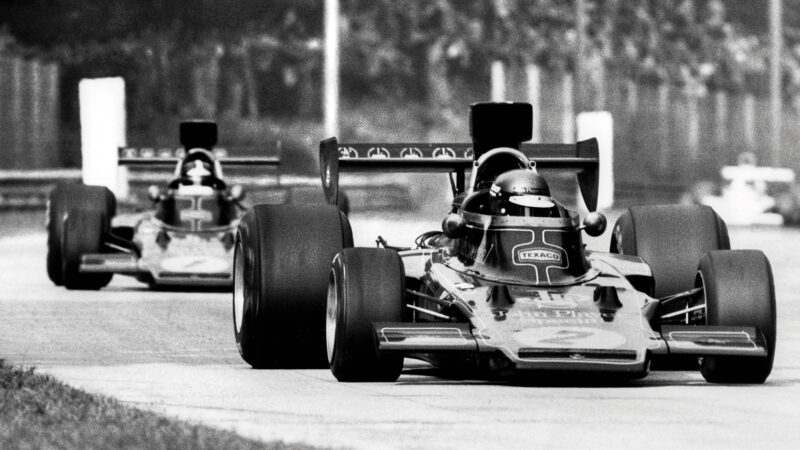
A Lotus 1-2 at Monza, 1973, with Ronnie Peterson in front and F1 title hopeful Emerson Fittipaldi trailing.
Getty Images
“Colin, Ronnie and I decide we will not race against each other,” recalled Fittipaldi. “But near the end, if Ronnie is leading and I am second, Colin will give a signal to tell Ronnie I can come past. So in the race we are an easy 1-2 and I am waiting for the signal from Colin, and it never comes. I am going crazy, because I still have a chance in the championship. So I start chasing Ronnie, and Ronnie starts racing too. You can’t blame him for that, because there was no signal. At the line he beat me by 0.8sec. After, I went to Colin, very disappointed, and he said, ‘Well, I decided not to give the signal.’”
The result? Jackie Stewart won his third title; Fittipaldi left to win one in a McLaren.
7. Alan Jones vs Carlos Reutemann
Williams, 1981
“All the stories that Carlos Reutemann and I hated each other are bullshit,” Alan Jones has claimed. Nevertheless, this chalk-and-cheese pairing offer up another prime example of why any team should be wary of pre-race agreements on fixing results.
Reutemann joined Williams in 1980 after a disappointing spell at Lotus. Well established at Williams and having formed a bond with Patrick Head that was never to be equalled by anyone, Jones took a deserved world championship. But in 1981 it was the revitalised Argentinian who led the team’s title charge.
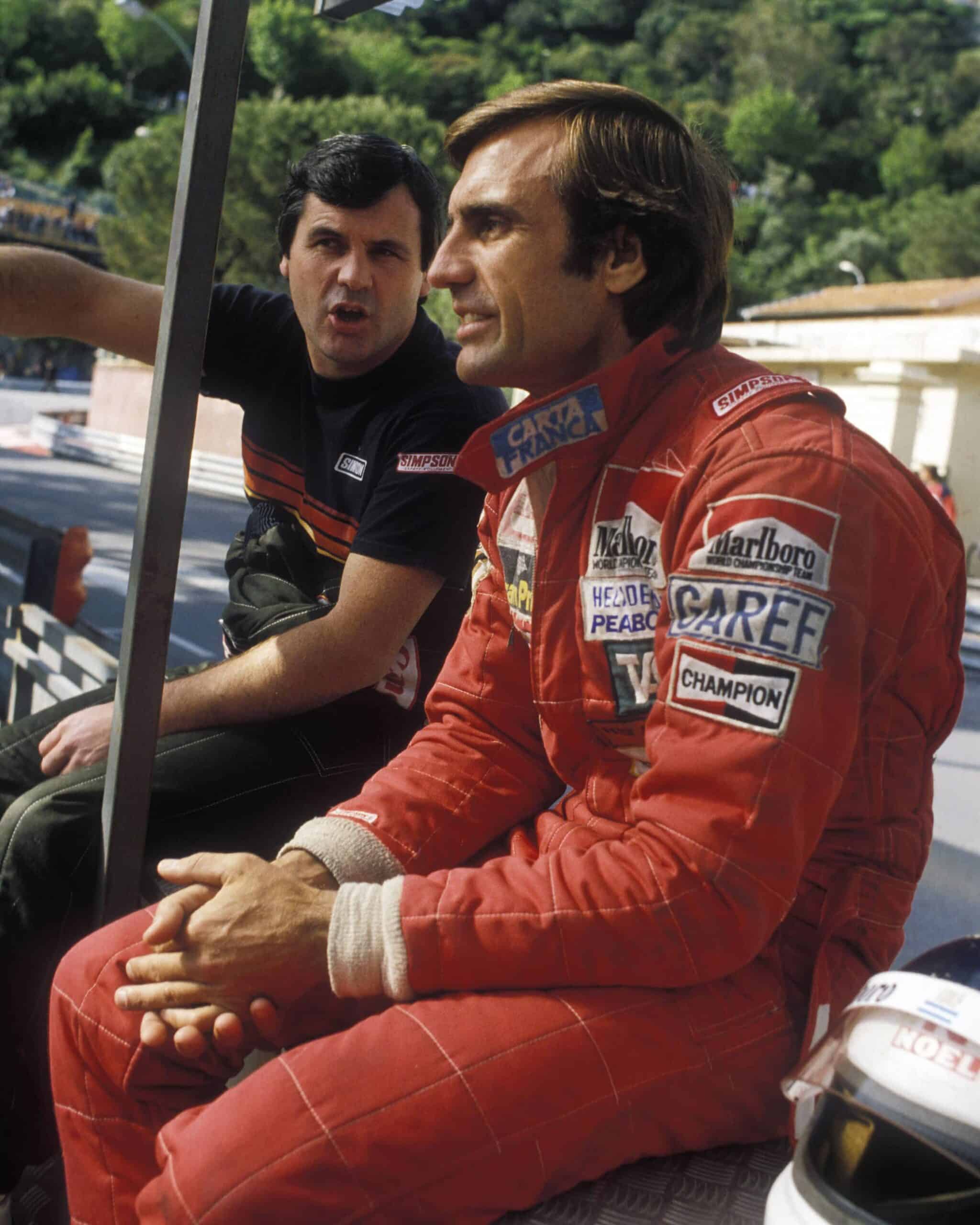
But the team’s season was always coloured by the controversy of a wet Brazilian Grand Prix, the second race of the campaign. Contractually, Jones was, as it said on the nose of his FW07C, No1. Reutemann’s deal stated unequivocally that if the two cars were far up the road from the opposition and Jones was within two seconds, the Aussie should win. Now in Rio with Reutemann leading, Jones a close second and nobody else within half a lap, the pit board went out, eight laps before the end: JONES-REUT. But Reutemann ignored the signal and duly won the race. Treachery! For two such contrasting men there was no way back.
6. Alain Prost vs RenÉ Arnoux
Renault, 1982
Another example of toxicity stirred by team orders angst – and the first of three rivalries in our eight to feature Alain Prost… Go figure.
It was surely the greatest day in French motor sport: the French GP at Paul Ricard, French drivers finishing 1-2-3-4 and the top two driving Renaults. Except they were in the wrong order. When it came to it little René Arnoux, who had the lead on merit, was never going to relinquish victory, especially to Prost.
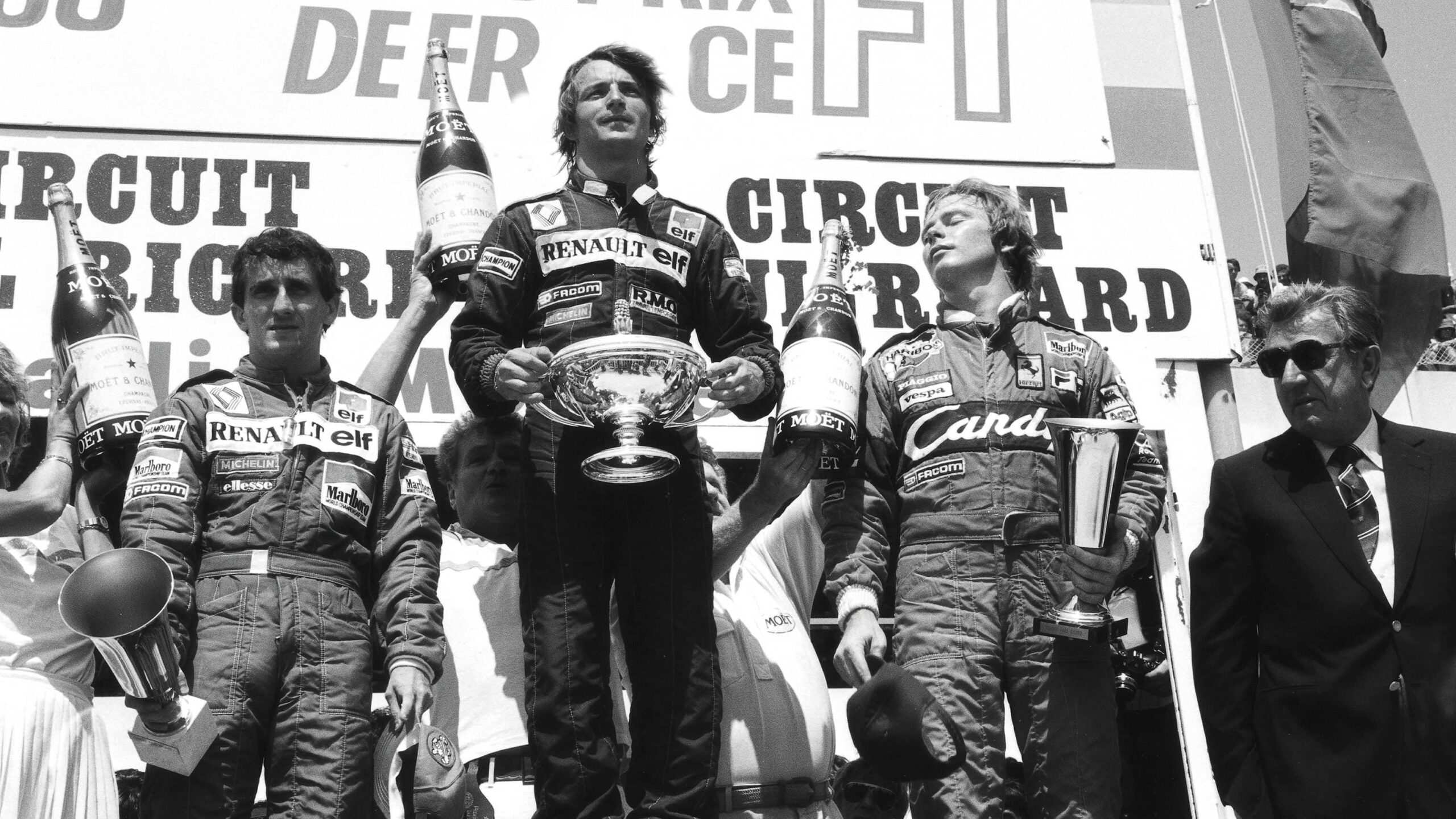
“The team manager signalled to Arnoux to slow down and let Prost win, but as seems fashionable in the 1980s team orders were ignored and Arnoux led his team-mate home to a Renault 1-2 in their own grand prix,” reported Denis Jenkinson. “There was such relief in the French team after all the troubles they have suffered this season, that everyone celebrated and ‘explanations’ were left for another day.”
“I had the same contract, I was not the second driver, I had the same possibility to win the race – crazy,” said Arnoux of the incident. “And at this time we are in the middle of the world championship, not the end. This is very important.”
Arnoux and Prost never saw eye to eye. What’s their relationship like today? A big Gallic shrug. “Hello, bye-bye,” Arnoux replied. “That’s it. We have a lot of people in the world. I don’t have any time to lose.”
5. Nigel Mansell vs Nelson Piquet
Williams, 1986-87
“He’s got all the ingredients to be a great person, it’s just that he chooses not to be.” That’s Nigel Mansell’s sad assessment of his old team-mate and Formula 3 rival Nelson Piquet.
The Brazilian arrived at Williams dismayed by Brabham’s decline and re-energised to lead the line with Honda’s increasingly potent turbo engine. But he hadn’t counted on Mansell. Or on Frank Williams breaking his back in a road accident and spending most of the first season dealing with matters far more important than racing driver squabbles.
It’s easy to see Red Five’s side, especially through a prism refracted by Piquet’s cruel, contemptible jibes about Mansell’s wife. Those twin British GP wins, especially the heroic ‘dummy’ on the other Williams at Silverstone in ’87, are also among F1’s greatest moments. But Piquet’s perspective withstands scrutiny.
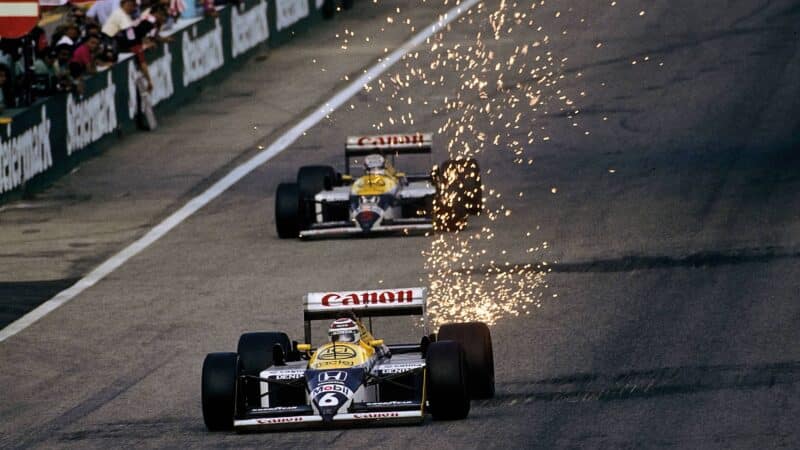
Sparks flying between Williams’ Nelson Piquet, leading, and Nigel Mansell at the Österreichring, 1987
Getty Images
Long-time Williams engineer Frank Dernie rated Piquet as faster than Mansell, at least until May 1987 when Nelson hit the same Tamburello wall at Imola that would later claim the life of Ayrton Senna. But also, “Nelson was a very hard worker,” said Dernie. “There was a time when we had to have a test quickly, to check a new modification. We called Nigel, and he said, ‘I’m in the Isle of Man, I can’t come.’ Nelson was in Brazil visiting his mother. When we telephoned him he was on the next plane, did the test, then flew back to finish seeing his mum.”
Ultimately, Piquet had the last laugh after one of the most mean-spirited team-mate rivalries. Even if his 1987 world crown remains one of the most underrated.
4. Didier Pironi vs Gilles Villeneuve
Ferrari, 1982
Forever the most heart-breaking team-mate rivalry. As ever, there are two sides of the argument over Imola 1982. Sympathy still largely falls with Gilles Villeneuve, who was made to feel gullible by the ‘betrayal’ of a man he had considered a friend.
But Pironi apologists point out Villeneuve had run wide and off the track, so Didier was probably leading when the ‘Slow’ sign was first shown from the pitwall. Was it a simple misunderstanding? Or was Pironi really the cold, calculating villain of the piece?
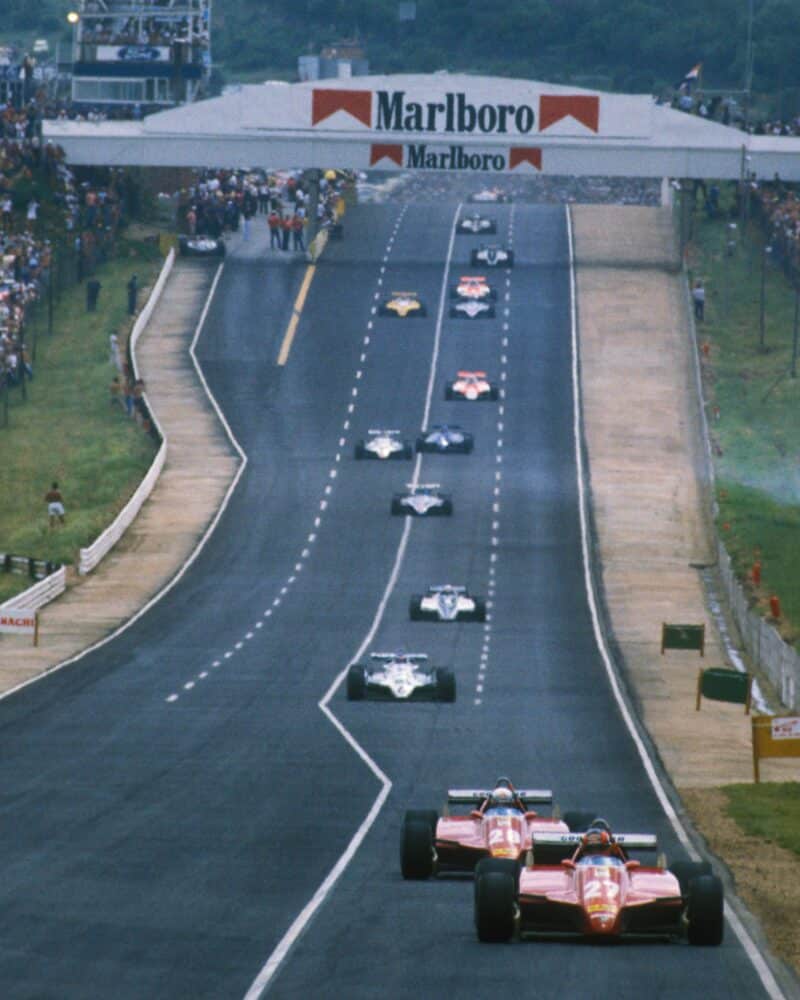
Ferrari’s Gilles Villeneuve and Didier Pironi lead in the 1982 opener at Kyalami – friends here, but foes weeks later
Grand Prix Photo
After Imola came Zolder, a disillusioned Villeneuve pushing one last time – and then over the edge. Pironi’s own demise, suffering terrible leg injuries after smashing into the back of Alain Prost’s Renault at a wet Hockenheim, then dying in a powerboat off the Isle of Wight five years later, forever twinned the pair in a horrific spiral of tragedy. They can never be parted.
3. Fernando Alonso vs Lewis Hamilton
McLaren, 2007
Martin Whitmarsh remembers the moment McLaren told Fernando Alonso it had signed GP2 champion Lewis Hamilton to join him at his new team. “He said, ‘We’re meant to be fighting for the championship. How can we fight when we have a rookie in the other seat? You can’t be serious. We need someone to push me.’ We know how that one turned out.”
Hamilton’s rookie F1 season remains a thing of wonder, 16 years later. “People forget: those first nine races in his F1 career he was on the podium every time,” said Whitmarsh, then Ron Dennis’s loyal lieutenant. “From the start in Australia he was challenging Fernando and in Monaco he was really challenging him. That was the real turning point for all sorts of reasons. Then Canada was the breakthrough moment when he won.”
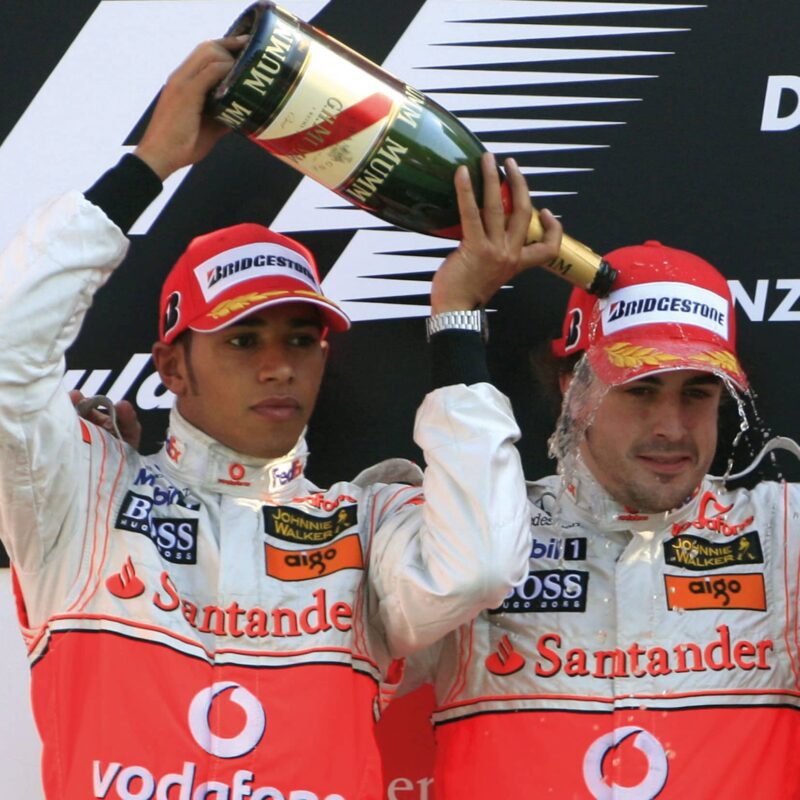
“You look like you need a drink, Fernando…”
Getty Images
Alonso was rattled, but his resentment was saved for Dennis who, he felt, had reneged on his promise to back him unconditionally in his bid for a third world crown. “But no one expected Lewis to go up against and beat Fernando in his first year,” says Whitmarsh. The tension spilled over in gamesmanship between the drivers in qualifying at the Hungaroring, after which Alonso made threats to Dennis that resulted in the ‘Spygate’ affair, disqualification for the team and an inflated $100m fine.
The infighting offered another salutary lesson with echoes of Mansell and Piquet in 1986. As they fought between themselves, Kimi Räikkönen stole the world title from under them. “Had we not been so pure in refusing to favour one over the other we would have won the championship, and we threw it away in trying to give them both an equal chance,” said Whitmarsh. “I can laugh about it now…”
2. Alain Prost vs Ayrton Senna
McLaren, 1988-89
“There was a time in my career when only he mattered. I just forgot about the others. We dominated F1 so completely that the other teams were just an abstraction. And despite everything, we always talked.”
That’s Alain Prost’s recall of the man who came to define his own career. What might Ayrton Senna have said about his old nemesis were he alive today? Would the friendship that emerged in the short spell between Prost’s retirement at the end of 1993 and May 1, 1994 have deepened with time? It’s comforting to think so.
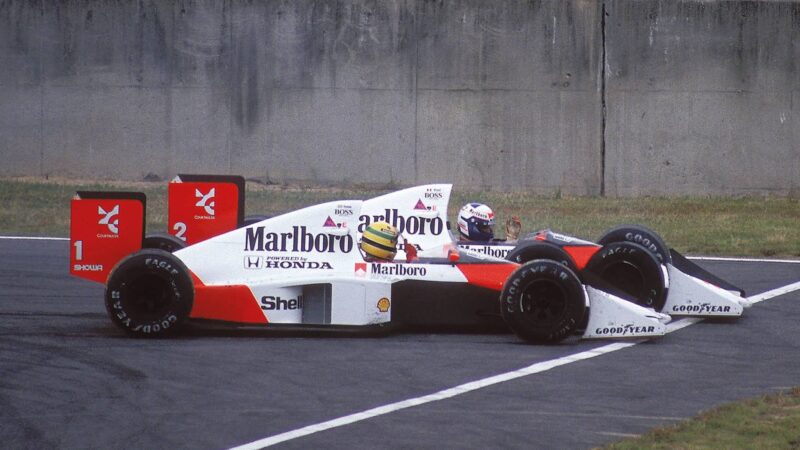
And the inevitable plays out – collision at the 1989 Suzuka finale
DPPI
Their first year together was relatively sanguine, as Prost outscored his new team-mate but lost the title on the best 11 results rule. But like Villeneuve and Pironi, smudged team orders at Imola was where it all came unstuck, in 1989. Again, was Senna’s apparent betrayal premeditated or merely a misunderstanding that got out of hand? Whatever, it was not sustainable for these two to remain within the same team, and it was Prost who was forced to move from what had for so long been ‘home’. The lame slow-speed collision at the chicane that decided the world title was the ending their poisonous rivalry deserved.
Except of course it was not the end. Round two, with Prost now fighting from the Ferrari camp, raised the stakes to a deadly level as, back at Suzuka, Senna speared his rival off at 150mph with cold intent. That they ever got beyond such a moment, even when the war was over, is a credit to Prost.
1. Niki Lauda vs Alain Prost
McLaren, 1984
They smashed our stereotype of team-mates at war and blazed through a season-long battle, maintaining a level of respect and class that Prost’s more famous McLaren rivalry demonstrably lacked. That’s why Prost vs Lauda in 1984 is our shining-light example of how it can be when team-mates become the ‘best of frenemies’.
In the third year of his second F1 career, Niki Lauda eyed Prost warily when the Frenchman joined him at McLaren direct from a title near-miss with Renault. The Austrian had toiled to develop the Porsche turbo clothed as a TAG and now here was a major thorn. Awkward? Yes – and no.
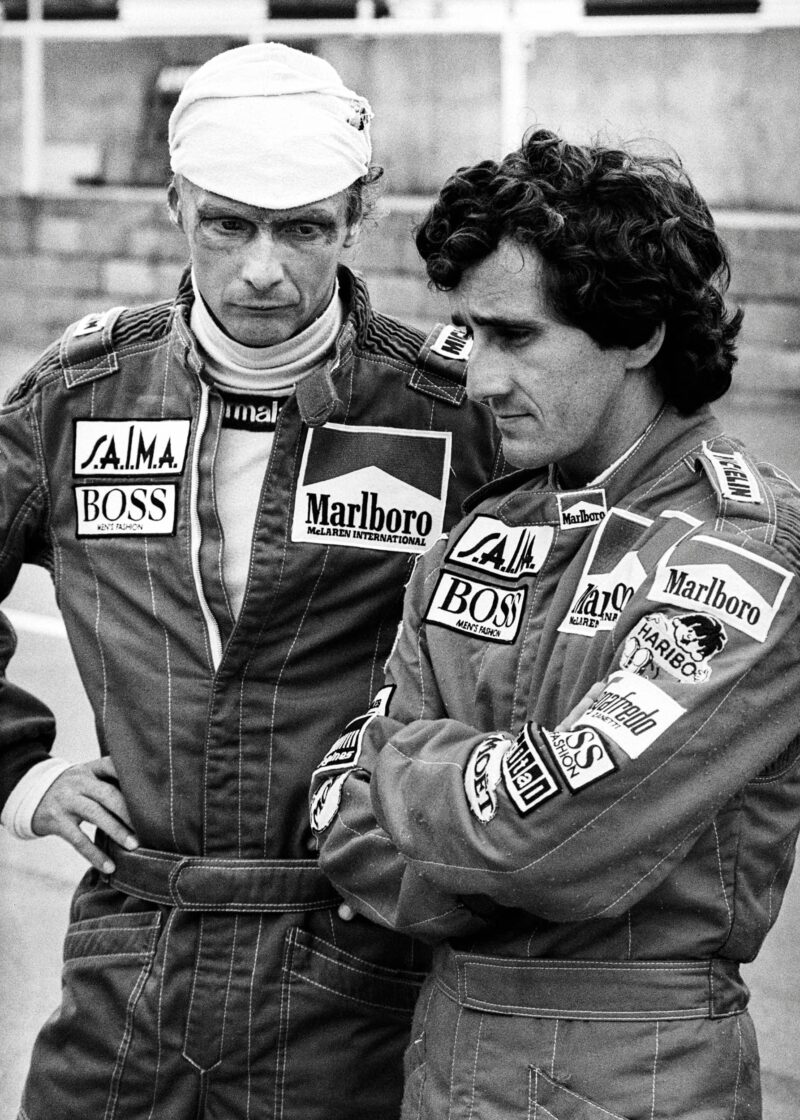
The Professor, Alain Prost, learnt from Niki Lauda.
Getty Images
“There was competition, but as a person I had no problem with him,” Lauda said 20 years later. “We had a good relationship, but as racing drivers we were fighting each other.”
Armed with John Barnard’s MP4/2, the pair carved 12 of 16 races between them – Prost seven, Lauda five – but also suffered a rash of reliability problems. Every time Prost came a cropper, Lauda always seemed to be there to pick up the pieces. He’d worked out early on that Prost had him licked for pace, set aside his ego and focused on race set-up.
The fascinating duel all came down to an Estoril finale where, if Prost won, Lauda would still be champion by finishing second. Not straightforward from 11th on the grid and with a race-long turbo problem – but Lauda drove one of his best grands prix to achieve what he needed. A champion by half a point.
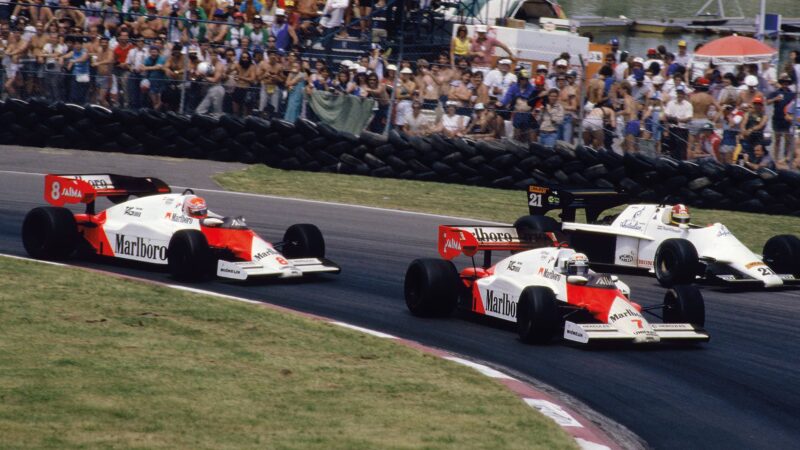
In 1984 Prost, leading, won more GPs than Lauda but lost the title to his McLaren team-mate
DPPI
You could forgive Prost were he bitter. That he wasn’t says it all about their dignified rivalry. “In ’84 I learned a lot,” he said. “I said to myself that maybe the quickest driver is not going to win the championship, and for the future I have to think and work differently.”
In 1985, Lauda lost sight of his team-mate. Prost had taken a leaf from the master. “I had a lot of races where I was thinking it was better to finish second, third or fourth, rather than going too fast or taking a risk,” Prost said. “So in fact you always learn about these things, and in the end Niki’s way was right.”